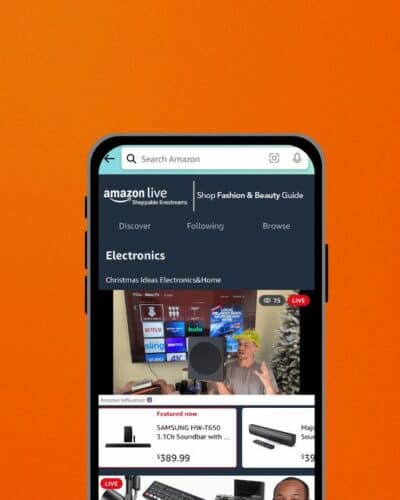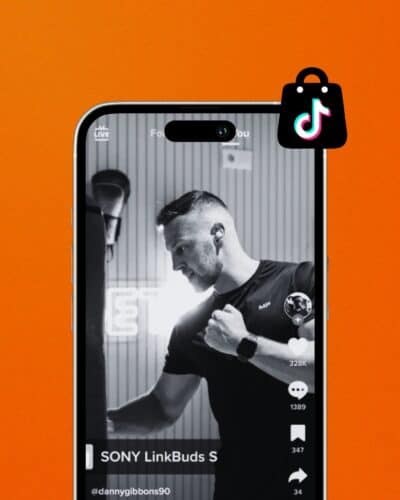If you’re a frequent user of social media, you’ve probably witnessed the emergence of 3D avatars across the likes of Snapchat, Facebook and Instagram. In fact, even if you’re not one for social platforms but use Whatsapp or Apple Messages, then you’ve almost certainly seen 3D and 2D avatars infiltrate digital communications!
Every platform is hell-bent on creating 3D avatar capabilities, but why? Does the typical social media user even have an interest in virtual avatars, and how important will virtual avatars be in the future of the internet?
Article Highlights
- Understanding what exactly is a virtual avatar and where they came from
- Virtual avatars taking hold with the virtual band Gorillaz
- The rise of virtual influencers including CGI influencers and VTubers
- The major players developing avatar creation tools across social media platforms
- The application of digital avatars when using video conferencing tools
- What the future will look like and the importance of the metaverse
What Are Virtual Avatars?
Avatars are essentially on-screen or virtual manifestations of a user. They don’t have to replicate the user’s actual appearance, having the potential to take on any shape or form as long as they reflect human characteristics, such as a face capable of expression.
The early appearance of avatars dated back to the 80s in computing, where internet users and gamers had on-screen representations. Avatars were seen as important, particularly in gaming to make the experience more immersive. If a person playing the game had an avatar that they felt reflected them, it would facilitate a first-person view.
Since then, avatars have popularised gaming experiences with the likes of Fortnite and The Sims generating revenue through an expansion of avatar/character customisations. It was clear that gamers had the desire to personalise their on-screen avatars to better represent who they wanted to be in a game. This is illustrated when Epic Game revealed that Fortnite made $50 million from NFL-branded skins within a month.
Virtual Bands – The Case Of Gorillaz

Virtual avatars haven’t always just been appearing in games. For those born before the 2000s, you are sure to remember the launch of the virtual band Gorillaz. Formed in 1998 by musician Damon Albarn and artist Jamie Hewlett, the band consists of four animated members: 2-D, Murdoc Niccals, Noodle, and Russel Hobbs. Since its inception, Gorillaz has arguably pioneered virtual avatars and their application in different mediums!.
The virtual band would go on to experience huge success, with major tracks such as Feel Good Inc, On Melancholy Hill and DARE, to name a few. The band illustrated to the world that music didn’t need a face and revolutionised a new way of building fanbases. Gorillaz built a whole animated universe around their music, building connections with fans through virtual personalities that could be explored through the band’s microsite.
In fact, Gorillaz is returning with new music and is currently undertaking a European tour, a true testament to the relevance of virtual avatars and our ongoing fascination with the virtual band which spans two decades.
Virtual avatars in music doesn’t just begin and end with Gorillaz either. Fortnite has since held virtual in-game concerts with the likes of Travis Scott and Ariana Grande, whilst Snapchat hosted a virtual concert with Jennifer Lopez, all utilising digital avatars to represent the real-world artists.
The Origin Of Virtual Avatars Across Social Media
VTuber Avatars
The concept of reality has certainly been warped across social media for some time, with the internet unlocking the opportunity for users to be whoever they want to be online, for better or for worse. However, there have been a number of interesting developments in the field of virtual avatars that have coincided with the rise of social media.
The first is the case of the VTuber, a subcategory of a virtual influencer who specialises in video content across platforms such as YouTube and Twitch. VTubing originated in Japan around the mid-2010s, with the likes of Kizuna Ai, who began creating content in 2016.
VTubing has since expanded globally with creators experimenting with this medium including Ethan Klein on the H3 Podcast, Twitch streamer and YouTuber, Pokimane and PewDiePie. Creators are even pivoting to VTubing with Dutch YouTuber Jordi Maxim Van Den Bussche, also known as Kwebbelkop, investing in a new channel that features Bloo – his VTuber identity.
To reference how relevant this type of virtual influencer is in Japan, there are specific talent agencies that cater exclusively to virtual avatars. Furthermore, a VTubing company based in San Francisco named VShojo recently raised $11 million in seed funding. VShojo identified the potential of VTubers and has since sought investment to further their talent roster, aiming to bring VTuber partners to gaming and anime cons.
If there was any doubt about the success of VTubers, then look no further than Vshojo’s partner Ironmouse. The VTuber shot to fame after a sub-a-thon on Twitch, which saw the creator surpass one million followers and 100,000 active subscribers on the platform.
CGI Influencers
Then we have the rise of the CGI influencer. Your first experience with CGI influencers was probably Lil Miquela, which started as a social experiment by a transmedia studio, specialising in creating complex digital characters named Brud.
A CGI influencer is a computer-generated character, adapted to become a virtual social media influencer, operating as robots/artificial intelligence blurring the lines of reality. Much of our fascination with CGI influencers is the ambiguity of their existence, having us question how far the influencer is based on a real person.
CGI influencers have rapidly grown in popularity with the company developing Lil Miquela(Brud), also creating personalities such as Bermuda and Blawko, all having a backstory and interrelationship that established a digital universe where all Brud created CGI influencers coexist.
We also have players such as Shudu – dubbed the world’s first digital supermodel. Shudu was created by fashion photographer Cameron-James Wilson in 2017 and has since been integrated into the marketing of huge brands such as Balmain and Fenty Beauty. The list only goes on and stands as the building blocks of how technology could shape influencer marketing in the metaverse.
Why not read more about virtual influencers in our blog post: ‘The World of Virtual Influencers – Is This a Glimse Into the Future of Influencer Marketing?‘.
Digital Avatars Across Social Media

The opportunity for digital avatars has not been overlooked among the major social platforms. We’ve seen the likes of Snapchat, TikTok and Meta all develop avatar creation tools in order to maximise engagement and tap into the interest in personalisation.
Snapchat Avatars
The first platform to cement the offering of digital avatars across social media was undoubtedly Snapchat. Back in 2016, Snap purchased Bitmoji and parent company Bitstrips for $64.2 million, then integrated digital avatars into the user experience, allowing users to customise their Bitmoji avatar through appearance adjustments and digital clothing options.
According to Snapchat, 70% of Snap users already have linked their Bitmoji avatar to their account. Furthermore, the rollout of Bitmoji characters proved advantageous for brand partnerships, leading to digital collections with Ralph Lauren, Converse, Crocs and Nike.
Snap has also announced the addition of 3D Bitmoji avatars to the app, along with a whole host of new customisation options including over 1,200 different combinations of facial expressions, poses, backgrounds and gestures.
Avatars in the Metaverse
Meta, no stranger to replicating key elements of Snapchat, also launched digital avatar tools with the launch of 3D avatars in 2019. Digital avatar capabilities have also been an important focus for Meta’s VR environment, Horizon Worlds, in anticipation of the new era of the internet that will see the development of the metaverse.
Meta is experimenting with codex avatars that mirror human appearance in a virtual world, as well as working on physics-based avatars that are likely to use wearables to capture and utilise data on the human anatomy. Meta debuted these avatar developments at Connect 2021, a window into the future of digital avatars across Meta-owned platforms.
Meta has very recently launched an avatar fashion store. Meta will be featuring digital collections from partnerships with Balenciaga, Prada and Thom Browne, where users can kit their avatar out in the latest fashion. However, Meta plans to go beyond brand partnerships, with the aim to enable digital creators to launch their own avatar fashion items in the future!
TikTok Avatars
TikTok is new to the block, only recently launching its own avatar creation tool through the platform’s “Effects” panel. No doubt TikTok will be looking at digital clothing much like Snapchat in the near future!
Virtual Conference Platforms With Avatars

Tech companies such as Microsoft and Meta are also looking at virtual avatar applications across video conferencing platforms.
Microsoft has been working on bringing mixed reality and HoloLens work to Teams, to revolutionise how meetings occur in a corporate world largely operating on a new hybrid model. Microsoft is doing such by bringing Mesh, a collaborative platform for virtual experiences directly to Microsoft Teams, allowing users to utilise animated avatars.
Microsoft is looking to make meetings more interactive through 3D avatars that do not require VR headsets, and provide freedom to choose an animated version of yourself in meetings – useful if you wish to remain camera off! Microsoft will use AI technology to animate the avatar with your voice, with the option to switch to a 3D meeting, which will then extend your avatar movements to hands up when hitting the ‘raise hand’ option within Teams.
Meta is also experimenting with integrating avatars into virtual conferencing through Horizon Workrooms. This VR experience since launching has introduced a new way for office workers to connect virtually, presenting a future of how the metaverse can transform business meetings.
Meta launched a beta of its ‘Workrooms’ app last year, allowing users to attend meetings utilising VR headsets. As reported by Meta, users can join in VR as an avatar or dial into the virtual room from their computer by video call. Users can utilise a huge virtual whiteboard to sketch out ideas together or have expressive conversations that feel more like they’re all in the same room.
Clearly, the use of digital avatars is spreading to different areas of digital life, and avatars are only going to become even more important as Meta and other tech companies push forward with metaverse plans.
The Future Of Virtual Avatars
The rise of virtual avatars has certainly correlated with an increased time spent in digital environments, whether that be games, social media apps or VR worlds. According to a recent study by Virtue, super-personalised avatars will soon be commonplace, generating a demand for digital fashion. The study also recalled that 95% of those surveyed said they had an interest in purchasing digital fashion and 82% had already bought some form of digital fashion.
We are already seeing the likes of Snap and Meta establish the foundations of digital clothing via digital avatars across their respective platforms. To this point, Snapchat in 2020 applied for a patent on Bitmoji fashion, ensuring only Snapchat can showcase a Bitmoji version of fashion retailers in partnership with the platform. Clearly, recognising the opportunity for digital clothing on the platform before other players entered the ring.
Furthermore, fashion appears to be the industry charging ahead with digital avatars to launch into the new digital era. Examples of this include Decentraland launching its first Metaverse Fashion week with brands such as Tommy Hilfiger, whilst Balenciaga has launched digital wearables in partnership with Fornite and presented the Fall 2021 collection through a video game, titled “Afterworld: The Age Of Tomorrow.”
Certainly, the metaverse will only accelerate the importance of virtual avatars, as virtual experiences will call upon the need for users to create virtual representations of themselves that they can carry through to other worlds. Avatars are the critical element in making virtual worlds feel immersive and with various companies all developing their own metaverse products, these virtual representations need the freedom to jump between different environments. Ready Player Me is a company already establishing itself as a solution for cross-platform avatars, raising $13 million in a Series A funding round and being used by more than 900 companies, including Verizon and VRChat.
As we look to the future, we can expect more social platforms to develop avatar creation tools through technological advancements to more accurately mimic human characteristics in a digital avatar form. As the metaverse establishes itself as commonplace in our digital future, we should expect the rise of even more virtual influencers and the establishment of an ethical framework.
Office life could also transform with virtual meeting rooms taking hold across the globe, transforming how business is conducted globally and ending the need to factor in travel costs for national and international business meetings.
To that end, we could soon see our digital avatar become more recognisable than our own physical form. Therefore, if the metaverse is to be our future then it is tied to our use of digital avatar technology, as the metaverse cannot exist without avatars.





